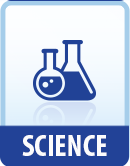|
This section contains 265 words (approx. 1 page at 300 words per page) |
The chemical compound quinone, or 1,4-benzoquinone, is a unicyclic, or ring phenolic compound. Quinone is a derivative of benzene, with two hydrogens replaced by two oxygens, each double bonded to a ring carbon (Figure 1). Quinone exists as yellow crystals, with a sharp odor similar to chlorine bleach. The chemical formula for quinone is C6H4O2, and its molecular weight is 108.1 grams per mole. Quinone is used as a chemical intermediate of complex reactions, an inhibitor of polymerization, a photographic chemical, an oxidizing agent, and a tanning agent. Benzoquinone and napthoquinone dyes also exist.
When a quinone cyclic molecule is the active portion of a larger molecule, it is referred to as being a quinone functional group. Quinone functional groups have powerful biological activity and are found in the most basic life-sustaining chemical reactions. For example, quinone functional groups are part of molecules perticipating in both cellular respiration and photosynthesis. Ubiquinone, or coenzyme Q, is a ubiquitous electron-shuttling molecule found in nearly all cells. Coenzyme Q is an essential electron and proton carrier that functions in the production of biochemical energy during respiration in aerobic organisms. It also has antioxidant and membrane stabilizing properties that serve to prevent the damage to cells by free radicals that results from normal metabolic processes. The structure of coenzyme Q consists of a quinone ring attached to a larger side chain molecule. Similarly, in photosynthesis, chlorophyll and the quinones are joined together by a protein and other molecules to form the photosynthetic reaction center, where energy from sunlight is converted into chemical energy.
|
This section contains 265 words (approx. 1 page at 300 words per page) |


